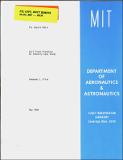Cell fleet planning : an industry case study
Author(s)
Silva, Armando C.
DownloadFTL_R_1984_04.pdf (8.102Mb)
Other Contributors
Massachusetts Institute of Technology. Flight Transportation Laboratory
Metadata
Show full item recordAbstract
The objective of this thesis is to demonstrate the practical use of the Cell Fleet Planning Model in planning the fleet for the U.S. airline industry. The Cell Model is a cell theory, linear programming approach to fleet planning. Four scenarios of the Model are presented: three with a nine-cell representation of the system and a test case using a thirty-cell representation. A detailed analysis of the results for each case has been performed. A comparison between the cases, with other forecasts, and with recent historical data which has also been .analyzed is shown. The Cell Model has produced realistic results. It has proven to be efficient regarding computer time and labor intensity given the size of the problem, and to be viable for industry use. Should no dramatic changes in the airline route system structure occur in the next ten years, results obtained show a greater need for small-capacity, short-range aircraft (e.g. B737's, B757's, and DC9's) than for other aircraft types.
Description
May 1984 Also issued as an M.S. thesis, Massachusetts Institute of Technology, Dept. of Aeronautics and Astronautics, 1984 Includes bibliographical references (p. 279-280)
Date issued
1984Publisher
Cambridge, Mass. : Massachusetts Institute of Technology, Flight Transportation Laboratory, [1984]
Other identifiers
13201695
Series/Report no.
FTL report (Massachusetts Institute of Technology. Flight Transportation Laboratory) ; R84-4